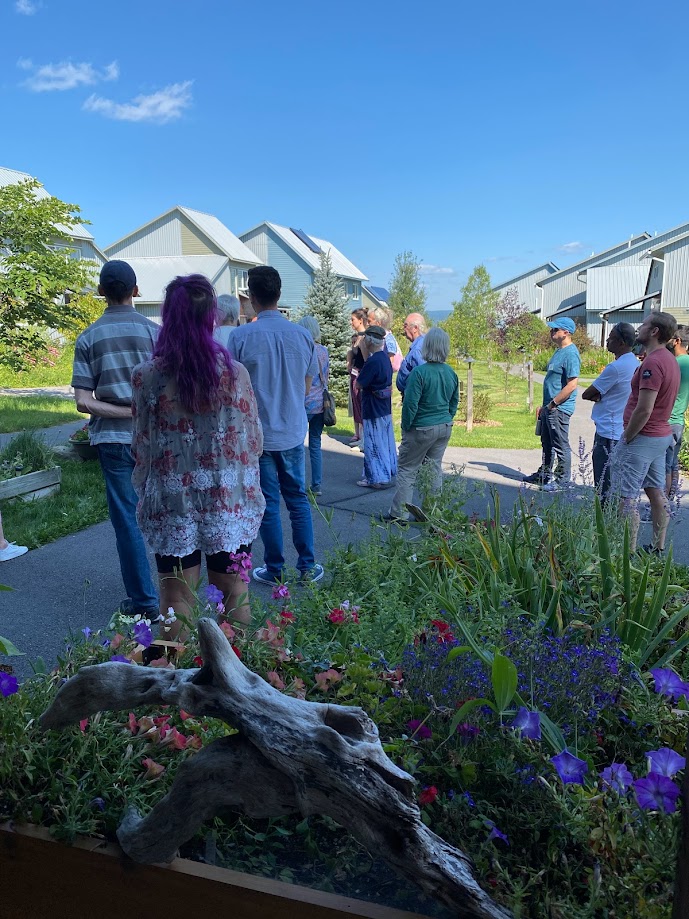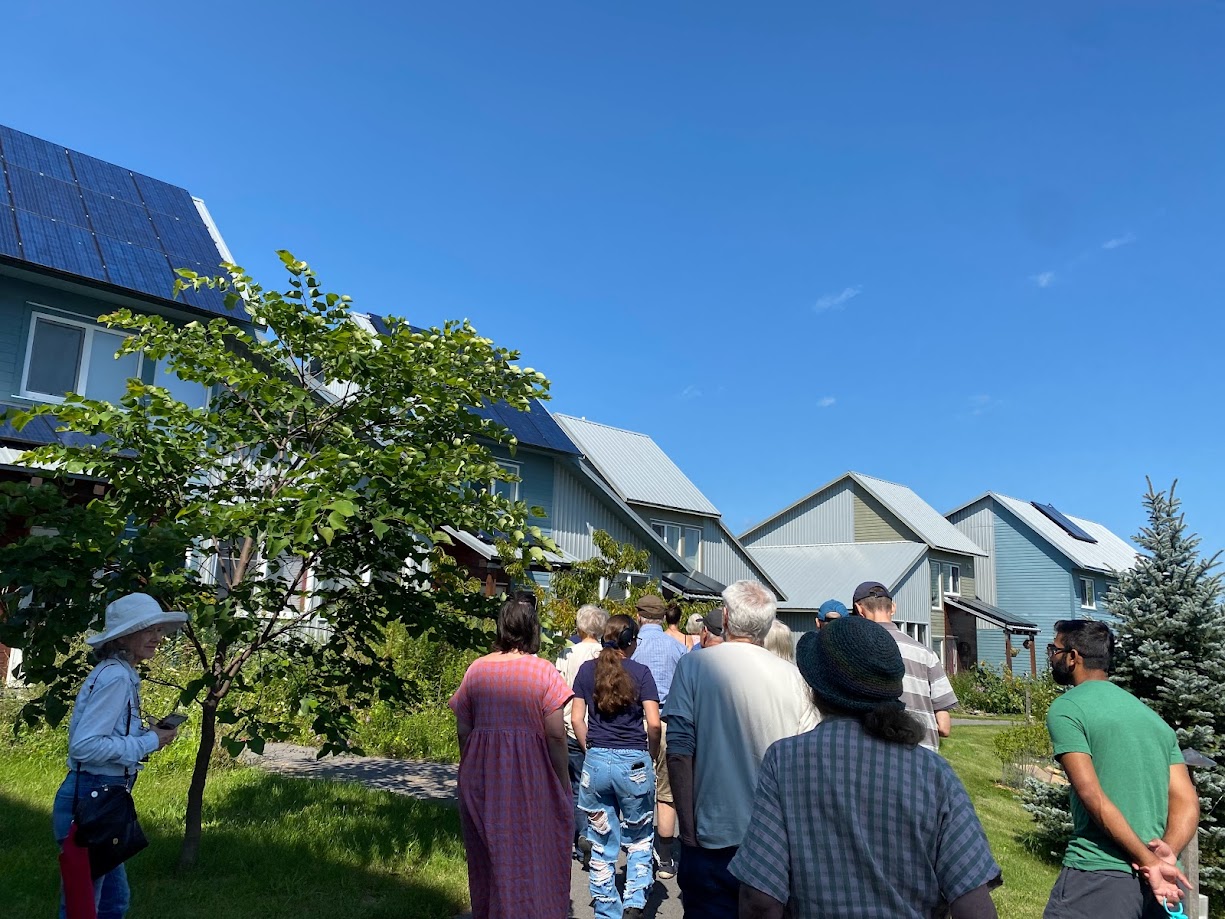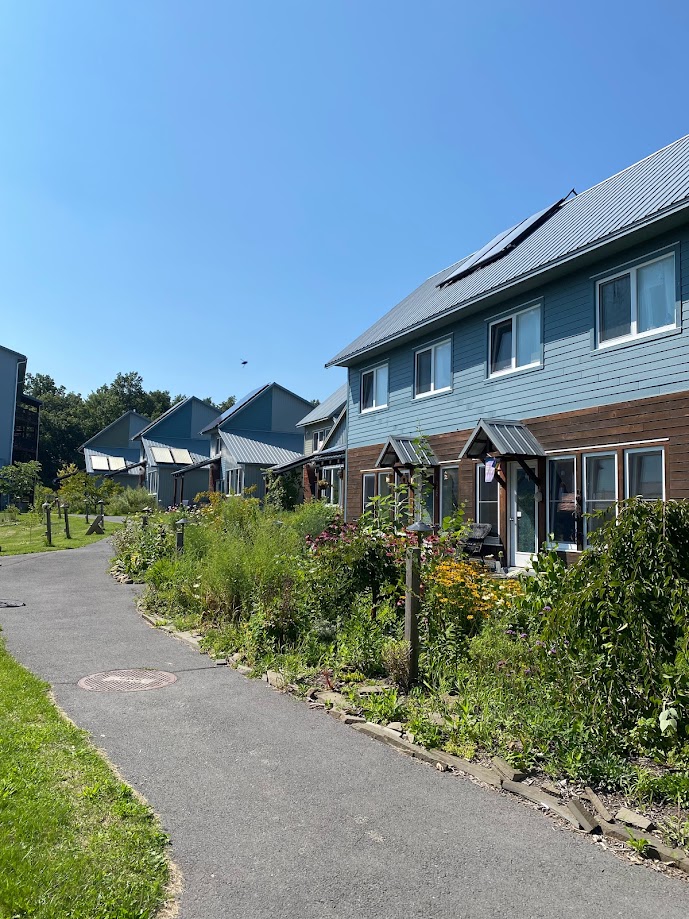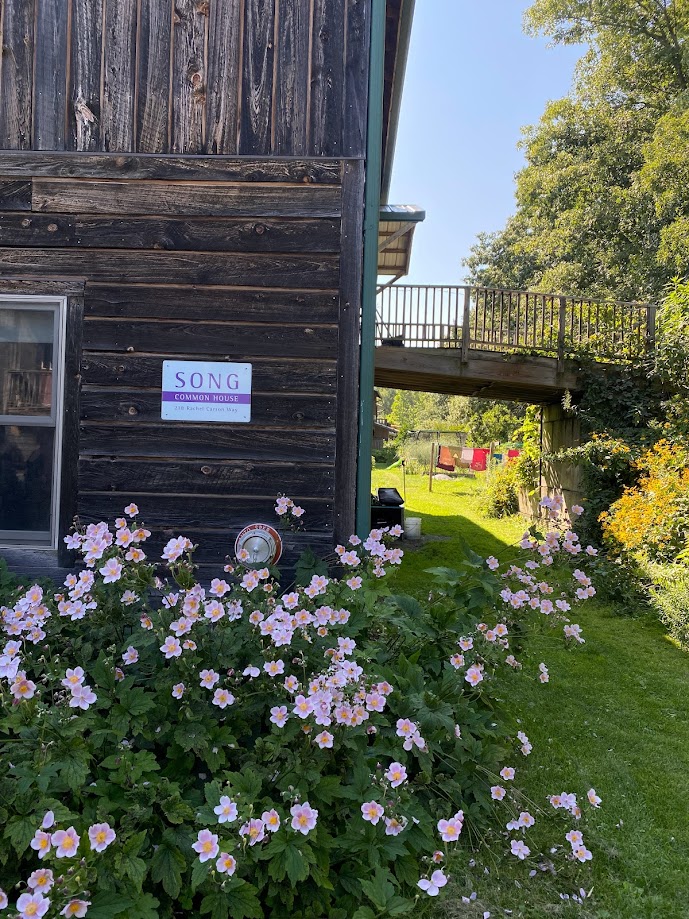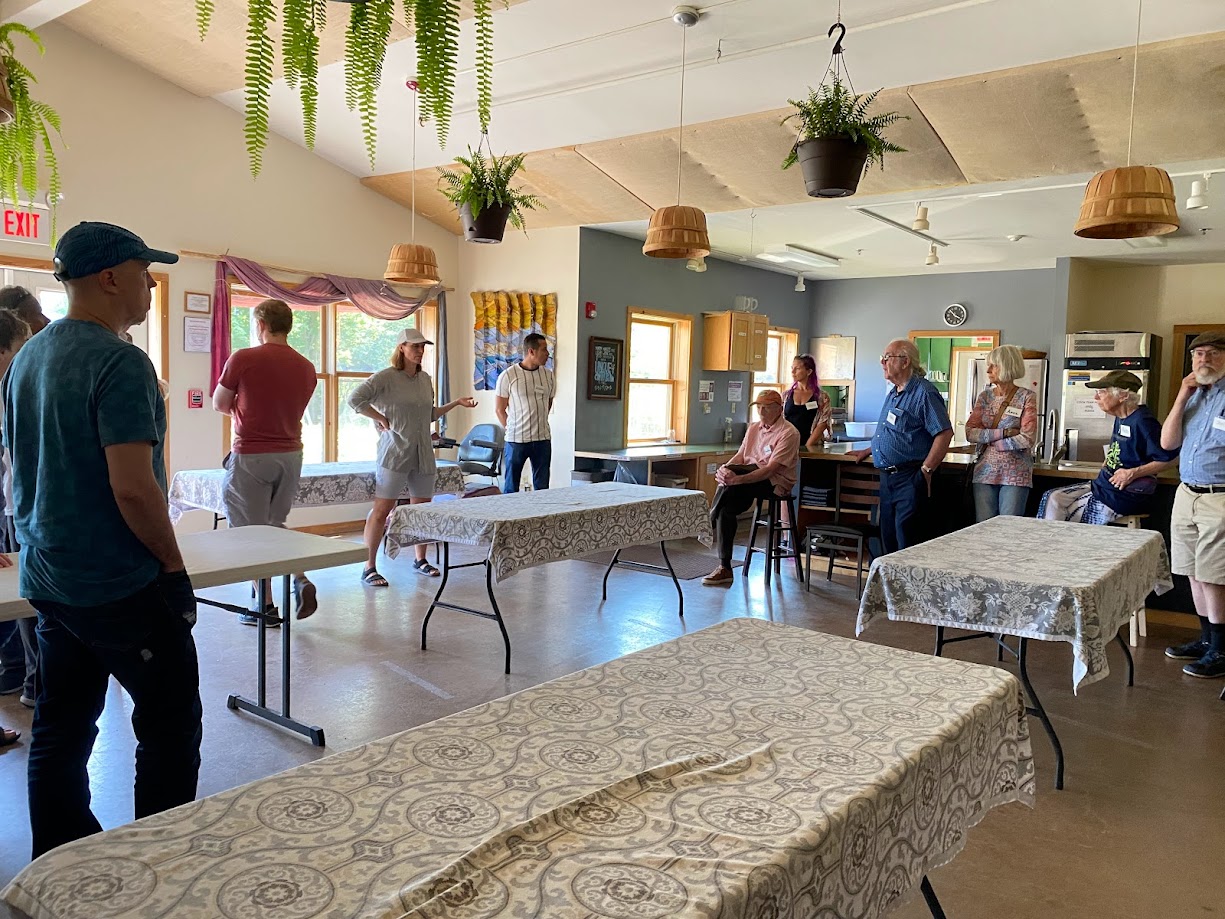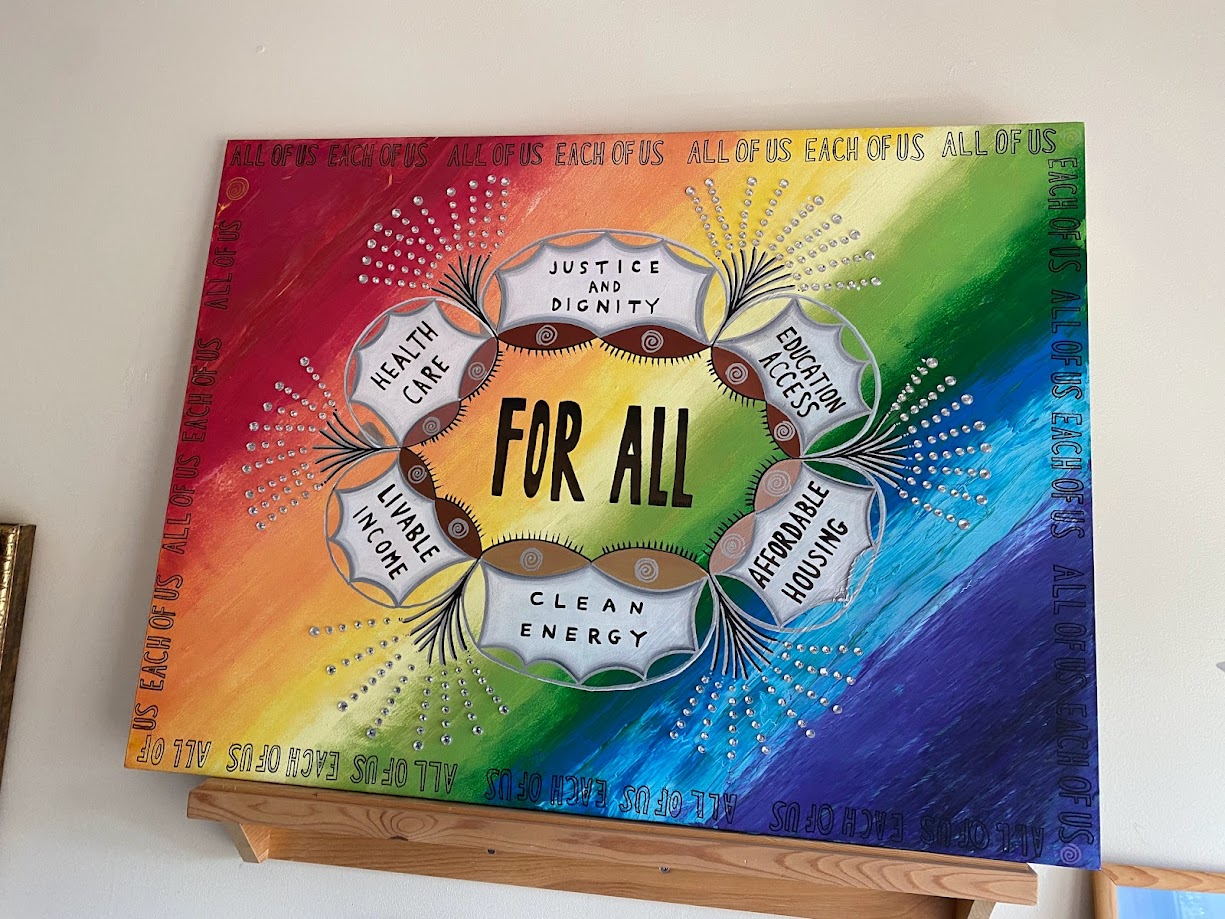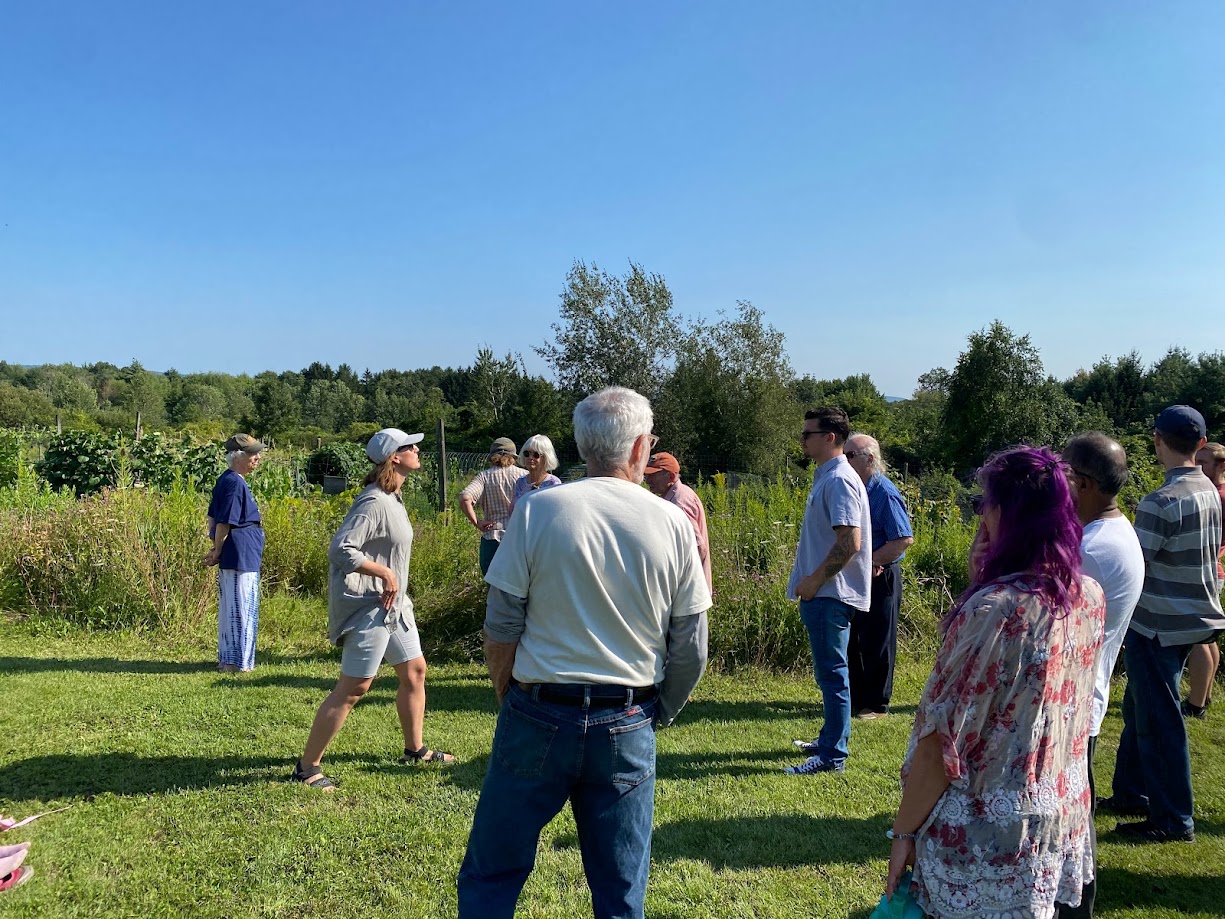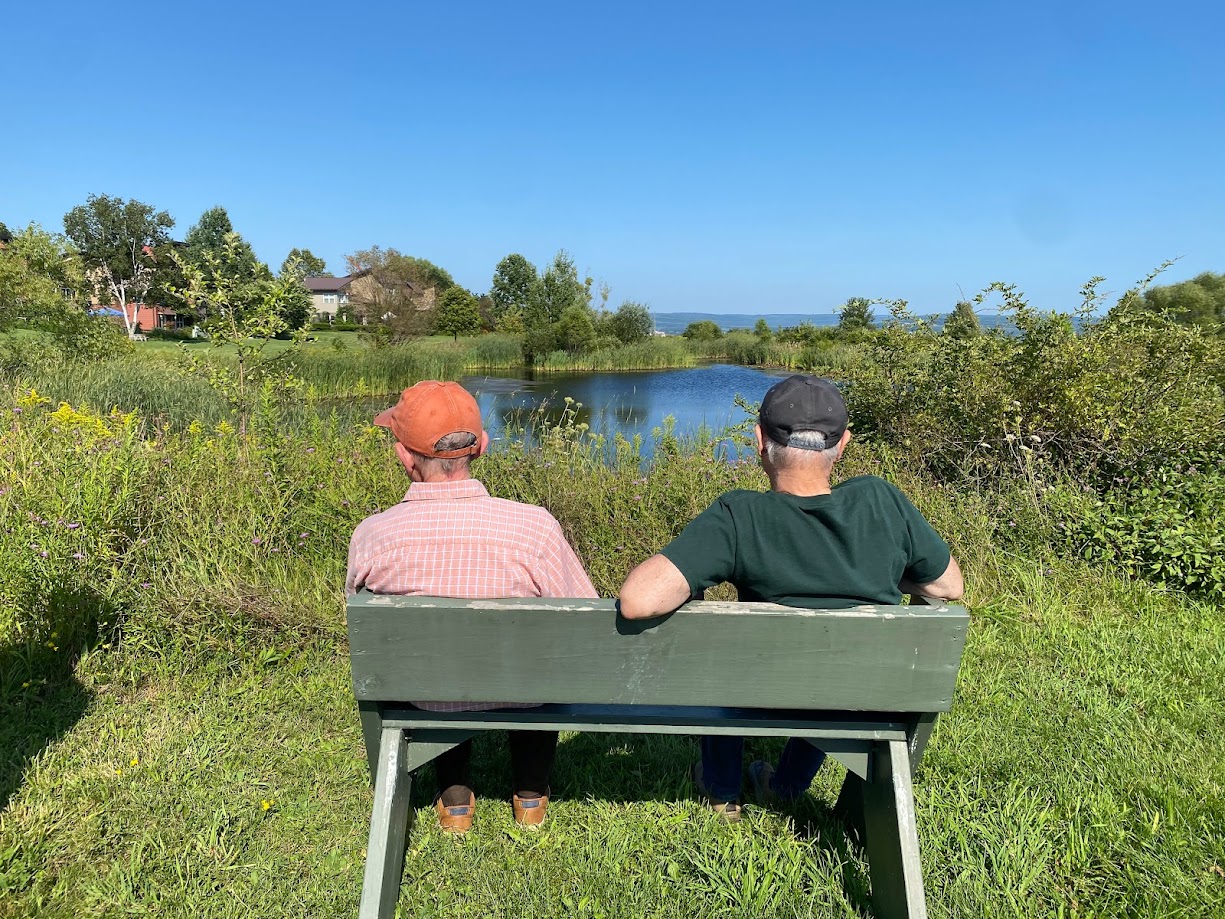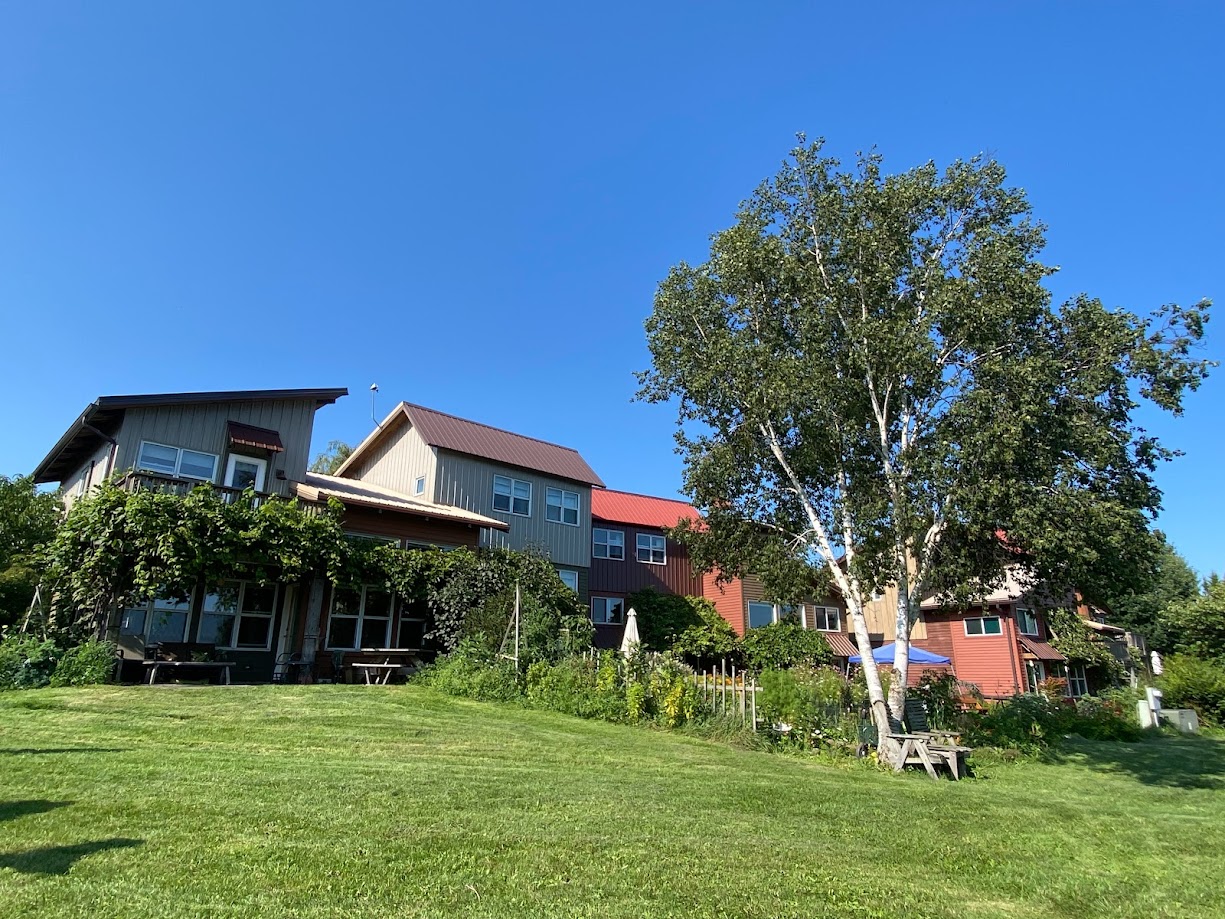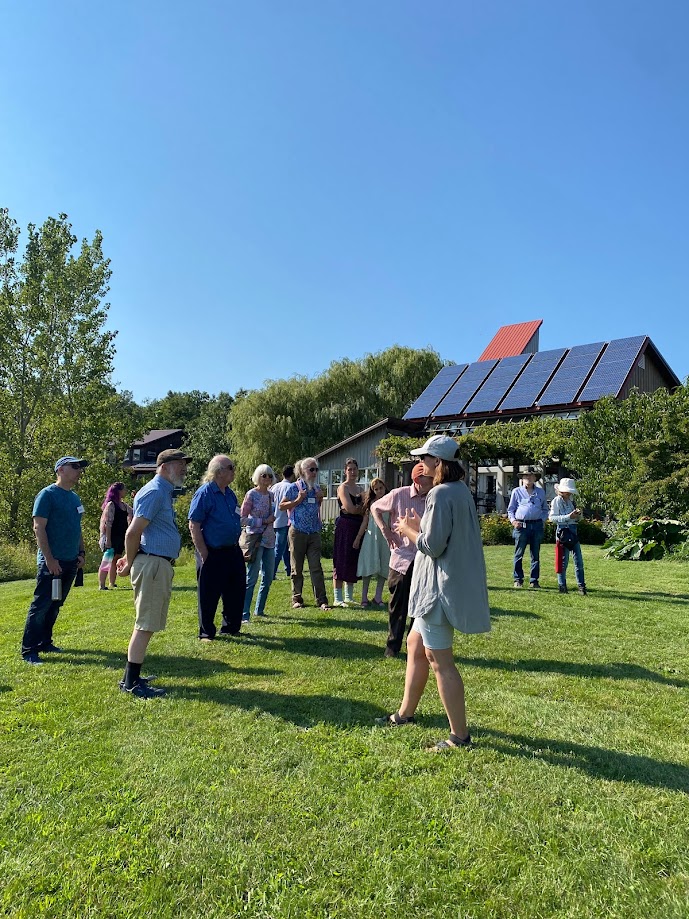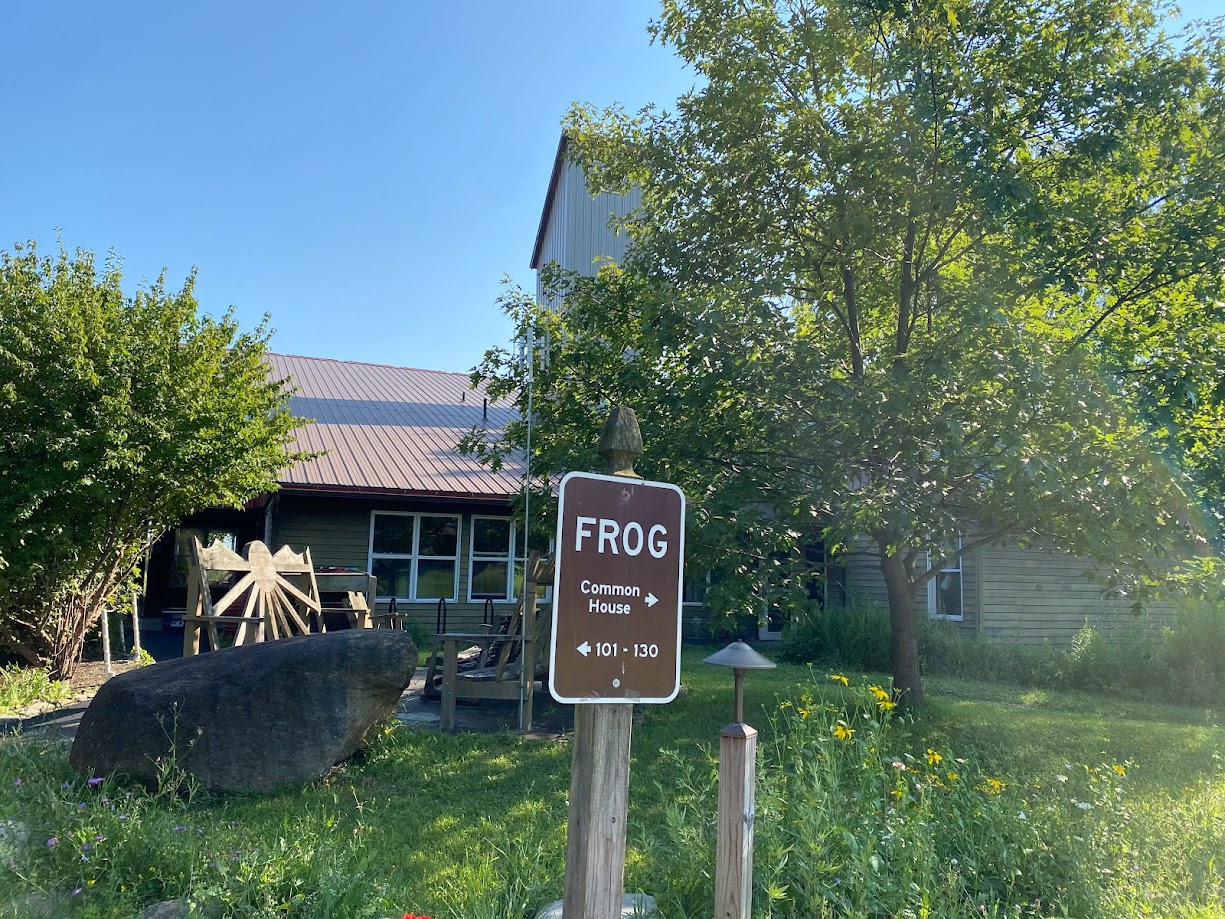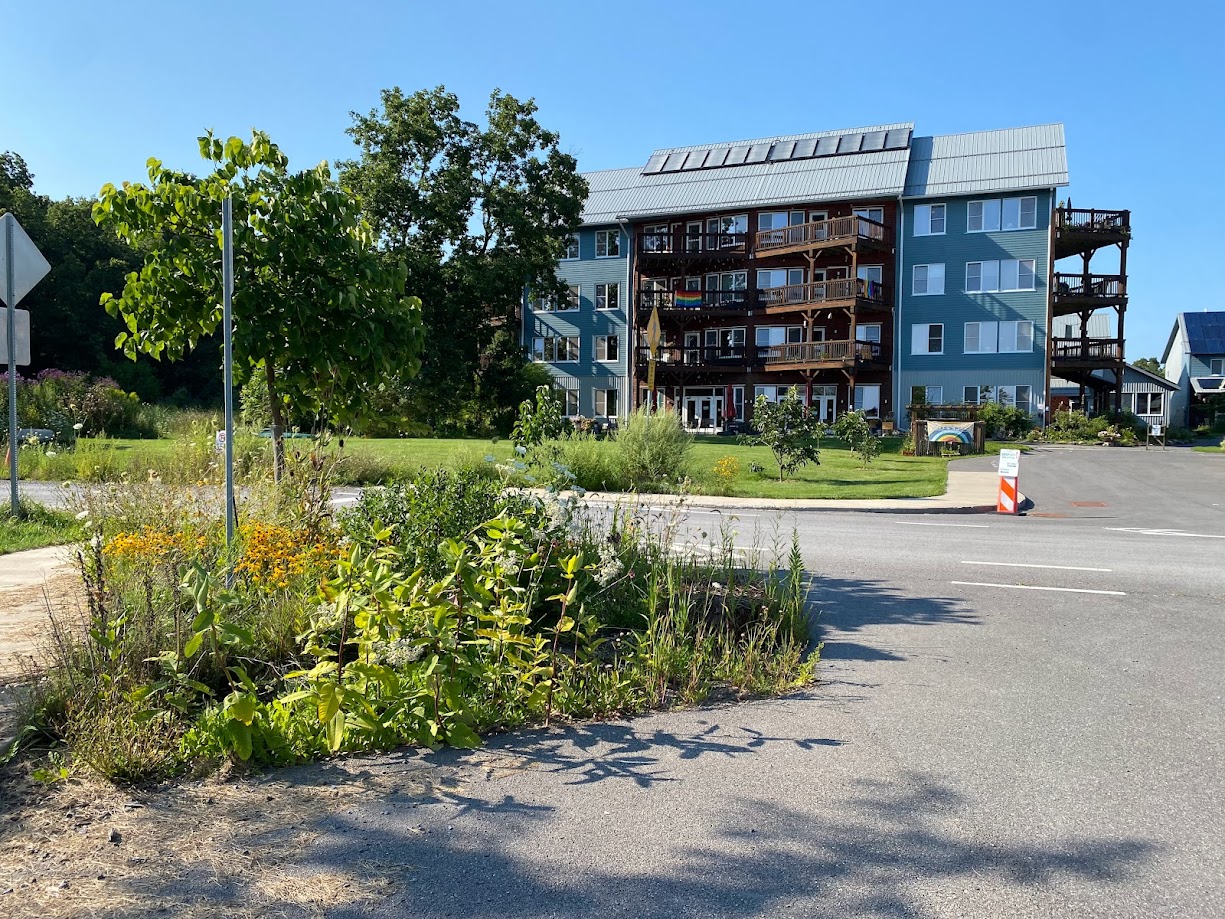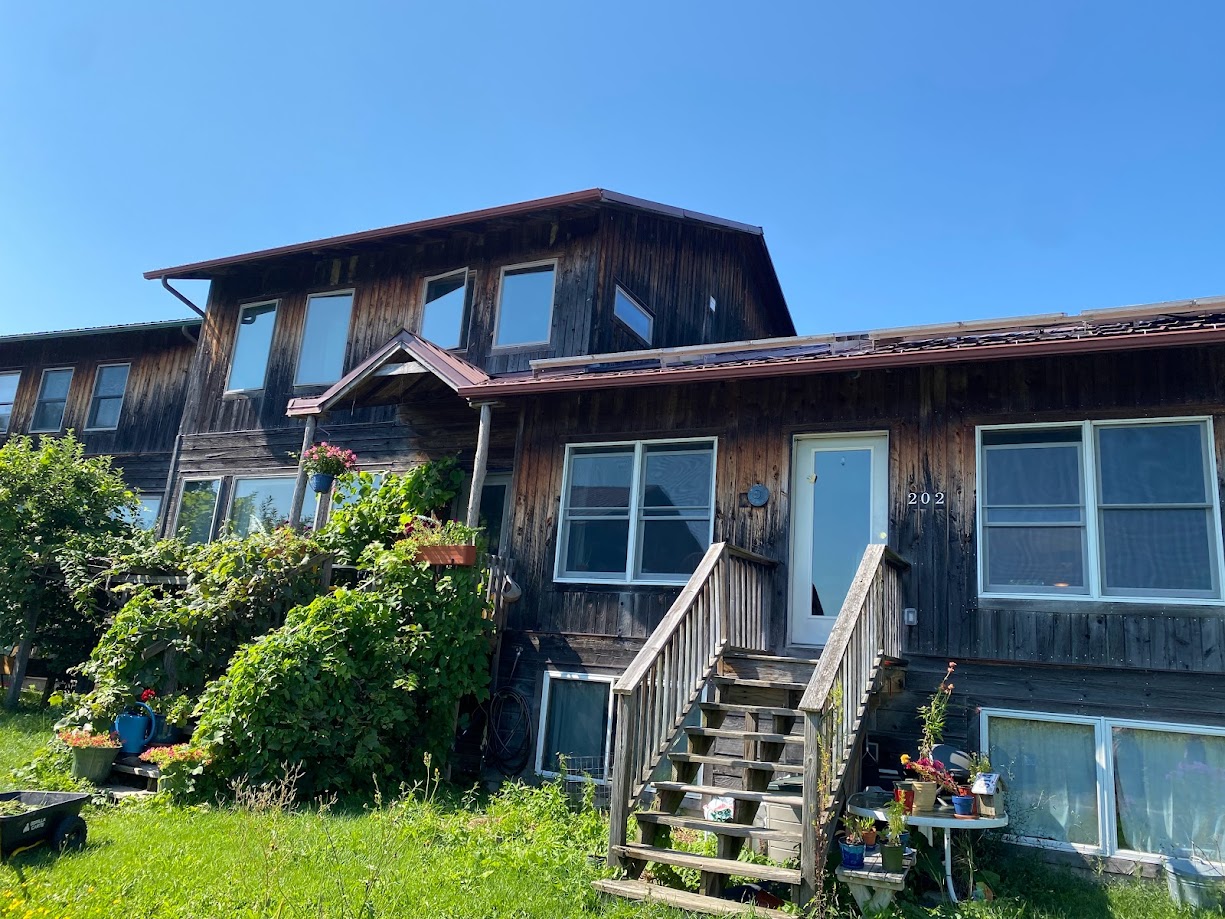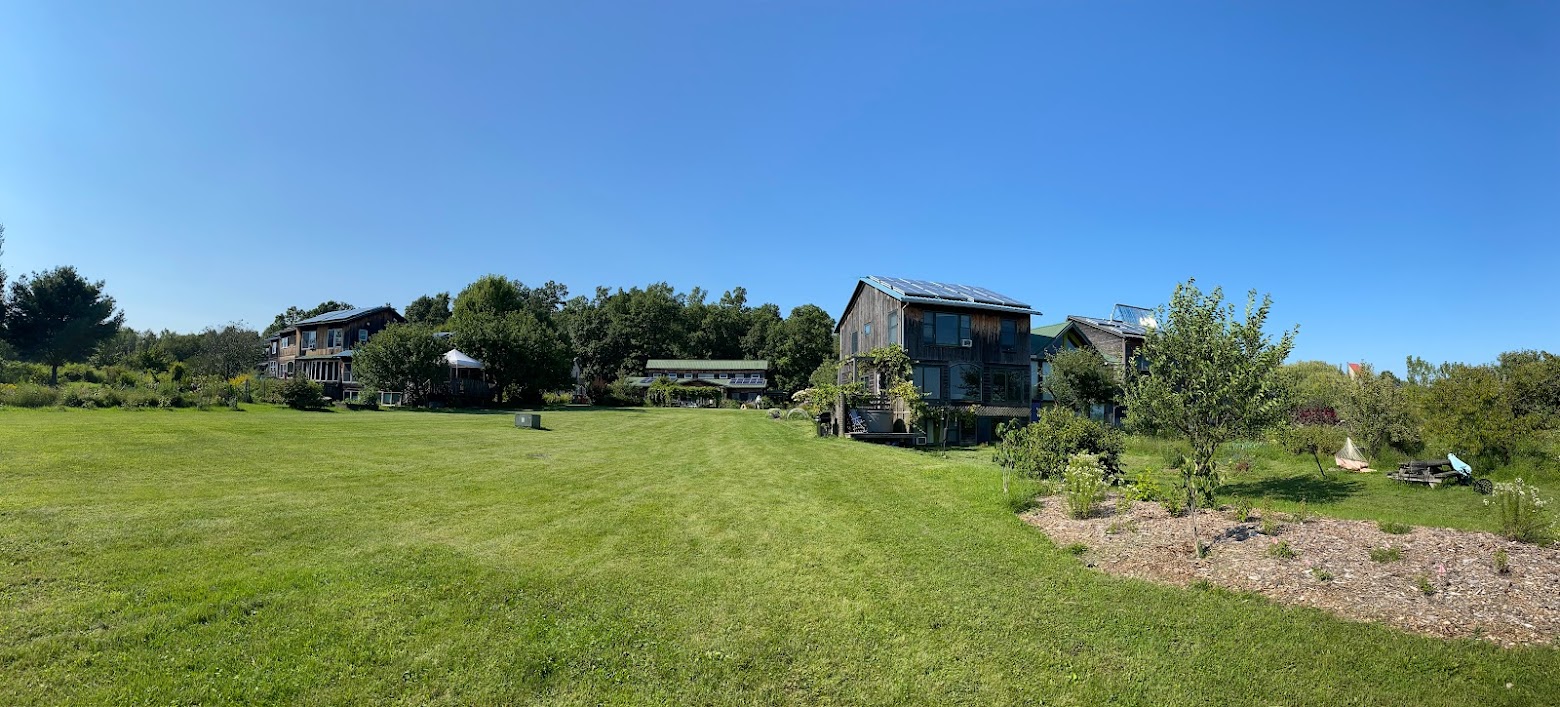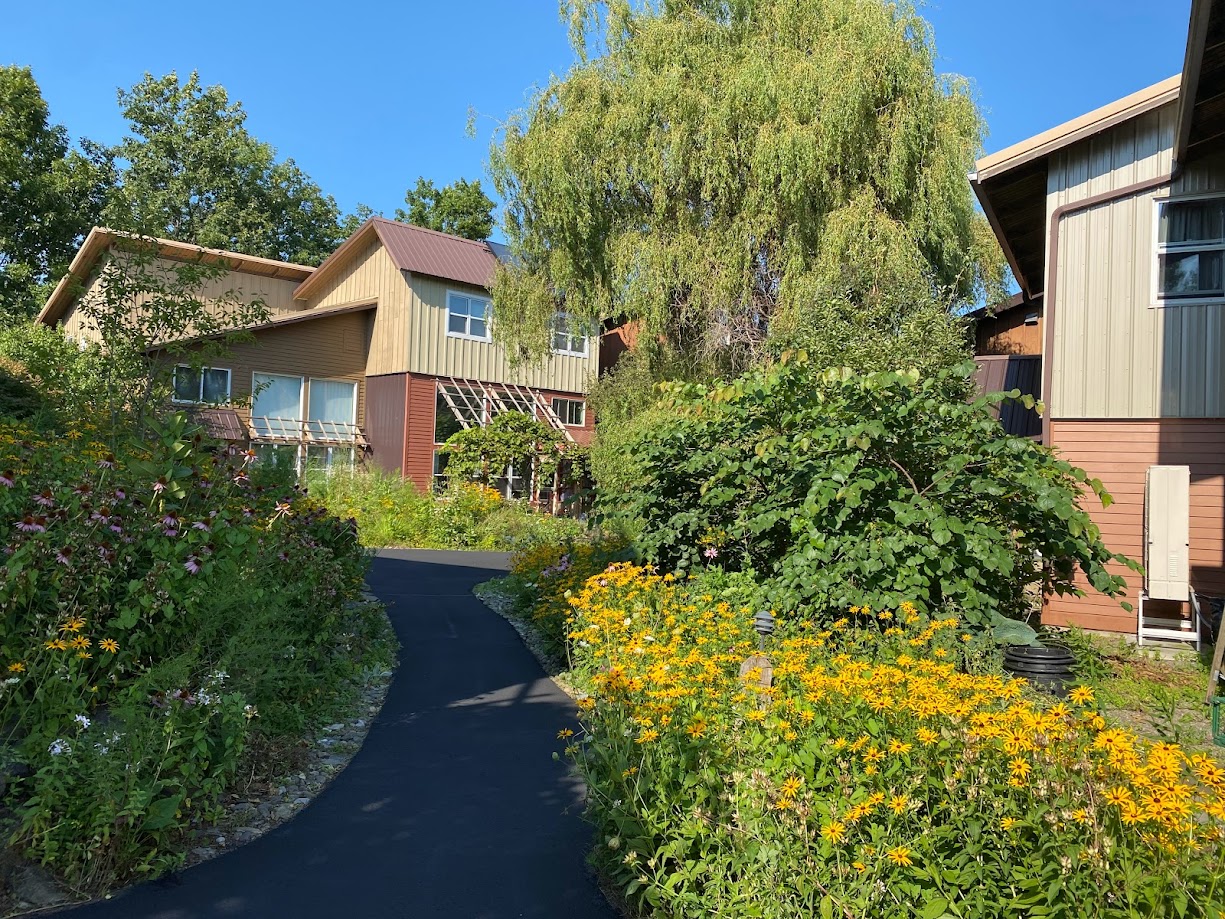Almost 30 members of three different ecovillage projects (the EcoVillage New Jersey Meetup; Rachel Carson EcoVillage (Gibsonia, PA); and our own Altair EcoVillage project) visited the EcoVillage at Ithaca on August 19. The day included a get-to-know-one-another picnic on the patio of EVI’s TREE Common House, then a two-hour tour of the premises, and afterward, for some, a group dinner at the world-famous Moosewood Restaurant. Our tour guide was Caitlin Cameron, the director of EVI’s educational wing (called “Thrive”). She was extremely well-versed in the many aspects of sustainability that pertain to ecovillage living.
The EcoVillage at Ithaca was built over the last thirty years on a 175-acre parcel of land just west of Ithaca, NY. It includes four(!) working farms and three cohousing neighborhoods. In regard to the latter, the First Residents Group (“FROG”) cluster of 30 homes was built in 1997. Thirty more units were added in 2006 via the Second Neighborhood Group (“SONG”). And then a third cluster (“TREE” – Third Residential Ecovillage Experience) of 40 units was completed in 2015. Our tour began there.
For the sake of affordability EVI included the construction of three stories of condo-type units above the TREE Common House. They determined that all homes in that neighborhood would be certified as LEED Platinum. Some even conform to the Passivhaus standard. All-electric and solar-endowed, they use 80-90% less energy for heating and hot water than typical homes in the northeast.
By the time the third neighborhood was built, EVI had become especially cognizant of accessibility issues. Every house in TREE has an entrance-way without steps and a layout with bedroom/bathroom amenities on the ground floor.
Our group next walked through the SONG neighborhood. The 30 homes there are built as duplexes to save energy and materials. They were individually customized and so they demonstrate a wide variety of sustainable building techniques. All homes are Energy Star-certified. The large Common House serves as an event venue for organizations from the wider Ithaca area. All three neighborhoods have access to their own community garden, but we noted that SONG’s is particularly impressive.
Our tour was diverted to the periphery of the FROG neighborhood because its central pathway was being paved on the day of our visit. The residents had originally wanted to leave the pathway natural (dirt and stones) but that turned out to hinder mobility, especially in wintertime. Such are the kinds of livability issues that every community has to consider and make decisions about.
FROG was the first cohousing project in the state of New York. All the houses are passive solar, with 14-foot-high windows on the south side and super-insulated walls. They are centrally powered by a 50KW array of solar panels just east of the neighborhood. A special FROG feature is the large community pond where residents swim, kayak, fish, and ice skate during the winter months. Some members of our group who stayed overnight took advantage of the FROG pond facilities on Sunday.
All three neighborhoods have playgrounds for children. With cars parked at the periphery, internal neighborhood areas are quiet and safe. All three of the Common Houses host community meals, concerts, and parties.
With lovely weather, common interests, and some inter-project bonding (and information sharing) many tour participants came away feeling encouraged about the future of the ecovillage movement and hopeful that EVI residents will soon have ecovillage cousins in Pennsylvania!
by Steve Welzer

